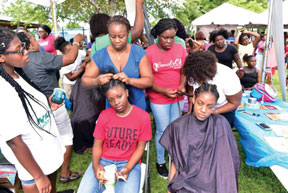
 Little Haiti Optimist Club, City of Miami Little Haiti Neighborhood Enhancement Team, and partners distributed 1,500 bookbags & school supplies and 3,500 reading books
Little Haiti Optimist Club, City of Miami Little Haiti Neighborhood Enhancement Team, and partners distributed 1,500 bookbags & school supplies and 3,500 reading books
MIAMI, FL – The Little Haiti Optimist Club, The Little Haiti/Edison/Little River Neighborhood Enhancement Team (N.E.T.), The Green Family Foundation and Partners presented their annual “Back 2 School” event on Aug. 5 2016 at Little Haiti Soccer Park.
Approximately 1,500 City of Miami children from the Little Haiti area were treated to live entertainment, face painting, arts and crafts activities, bounce houses, free food, haircuts, braiding and hairstyling.
The highlight of the day was the distribution of 1,500 book bags and school supplies as well as the distribution of 3,500 reading books provided by Miami Book Fair and Scholastics in partnership with the Children’s Trust Learn to Read initiative. It was great to see the children enjoying and reading the books they received. The Green Family Foundation which is one of our major sponsors says that, “It is important that students are prepared to begin the school year successfully”.
The event was made possible by the generous support of Little Haiti Optimist Club, Little Haiti/Edison/Little River N.E.T., The Green Family Foundation, City of Miami Commissioner Keon Hardemon, City of Miami Parks, City of Miami Police, City of Miami Fire Rescue, MLK Restaurant, FIU Herbert Wertheim College of Medicine, Key Transportation, Florida First Capital Finance, Cushman School, Photopia Studios, Adolphe Restaurant, Presidential Bosses, Clives Restaurant, Mrs. Santa’s Wish-list, Community Christian Church, Todd Disner Group, CJ’s Crab Shack, McArthur Dairy, BioCollections Worldwide, Coastal Export, Miami Dade College-Miami Book Fair, Enrichment Support Services, Nigerian American Foundation, Samuel’s Call and Hope for Miami.
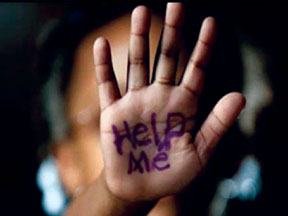 Child Abuse & Neglect Services
Child Abuse & Neglect Services
Child Abuse Services, in operation since 1984, is designed to ensure that all students will engage in student learning while living in safe home and school environments. It is intended to improve the overall achievement of students through removing them from harmful and stressful circumstances, if necessary, and providing remedial supports for them to achieve academic success.
The program is responsible for interagency collaboration with the district Department of Children and Families, ChildNet, the Child Protection Team/ Nancy J. Cotterman Sexual Assault Treatment Center, the Broward Sheriff’s Office Child Protective Investigations Section, other law enforcement agencies, the judicial system and community providers.
The program provides the following services:
A self-directed online Child Abuse and Neglect training to increase the knowledge and skills of teachers and other school personnel as they learn indicators of suspected abuse, neglect and abandonment.
A specialized training for all school-based Child Abuse and Neglect designees, Case consultation is provided to school-based child abuse designees, school administrators, teachers and other school district staff (including charter schools) who are responsible for mandatory reporting.
To report child abuse, dial 1-800-96ABUSE
To increase the health and well-being of children and families, visit http://browardstudentservices.com/child-abuse-neglect-services/ to view the Five Protective Factors Presentation.
 Whole Foods Market® launches free lunch giveaway for back-to-school
Whole Foods Market® launches free lunch giveaway for back-to-school
Florida stores offer 100 free lunches per store for first day of school
FLORIDA – To help Florida families prepare for the new school year, Whole Foods Market stores across the state are hosting a Back-to-School complimentary lunch pro-gram on the Sunday before classes begin. The first 100 registered children (ages 12 and under) per store will receive a free Whole Foods Market lunch ready for the first day of school.
Whole Foods Market team members are making sure kids get off to a smart start with an array of healthy lunch selections including sliced tur-key and cheese or a hummus & veggie option, served with a banana, Back to Nature chocolate chip cookies and a juice box. Like everything sold at Whole Foods Market, these wholesome lunches are free of artificial sweeteners, colors, preservatives and hydrogenated fats.
To ensure kids head into the new year with strong immune systems, stores are also including Alive! Kids multi-vita-min, EO Sanitizing packets, Nordic Gummies and Vitamin C supplements in each lunch package.
All 26 Florida stores will participate and lunches can be picked up on the following dates:
Sunday, Aug. 14, 2016 at Noon: Boca Raton, Jacksonville, Naples, Orlando, Palm Beach Gardens, Tallahassee, Wellington, West Palm Beach, Winter Park; Sun-day, Aug. 21, 2016 at Noon: Aventura, Coral Gables, Coral Springs, Davie, Downtown Miami, Fort Lauderdale, North Miami, Pembroke Pines, Pinecrest, Pompano Beach, Sarasota, South Beach
Online registration is required to participate in this event. Registered guests can bring their ticket into their selected store to redeem for the lunch bag; children must be present on day of pickup. One lunch per child (12 years or under). While supplies last. Selection varies.
To register for a free Back-to-School lunch, please visit: https://www.eventbrite.com/e/whole-foods-market-florida-back-to-school-lunch-giveaway-tickets-26547946623
To find the nearest Whole Foods Market, please
visit: http://www.wholefoodsmarket.com/stores/list
The Bilingual/ESOL Department is committed to providing rigorous academics, promoting community involvement, and delivering quality services to English Language Learners, multilingual families, schools, and district offices. The department offers the following services and programs:
- ESOL Program
- Dual Language Program
- World Language Program
- Bilingual Parent Outreach Office
- Translations and Interpretations
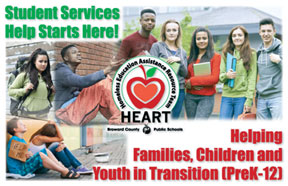 Homeless Education Assistance Resource Team (HEART)
Homeless Education Assistance Resource Team (HEART)
Program Description
The McKinney-Vento Homeless Assistance Act of 2001 governs the important work that Homeless Education Assistance Resource Team (HEART) conducts. It defines homeless students (families in transition) as those lacking a fixed, regular or adequate nighttime residence. This definition includes students (PreK-12) who are “doubled-up” sharing the housing of other persons due to their family’s loss of housing, economic hardship or similar reasons. The primary nighttime residence of students experiencing homelessness may also include motels, camping grounds, residing in emergency or transitional shelters and in some instances, living in cars, parks, abandoned buildings, bus stations or other public places.
The ultimate goal of the McKinney-Vento Act and HEART is to remove barriers that might otherwise prevent students experiencing homelessness from enrolling, attending and succeeding in school.
HEART is here to help by providing the following support services:
- School Supplies and Uniform Items
- Coordination of Transportation to School (Certain Rules Apply)
- Referrals to School and Community Services (e.g. School Social Worker, Family Counseling, Medical, Dental and Mental Health Referrals, etc.)
- Retrieval of Immunization Records and State of Florida Birth Certificates
- After School Care services (K-8th)
- Summer camp opportunities
- Cap and Gown Rentals at No Cost to Graduating High School Students
- Verification Letters Needed to Apply for College and the FAFSA (Free Application for Federal Student Aid)
- Shelter-Based Supplemental Academic Instruction
- Presentations to Community Agencies and Civic Groups
By Bob LaMendola
Florida Department of Health in Broward County
Before you know it, summer vacation will be gone and the kids will have to get ready for school again. So, it’s time for parents to start planning to get back-to-school immunizations.
The best choice is to take the kids to your family doctor to get their shots. But for parents who do not – or cannot – take their children to a physician, county offices of the Florida Department of Health (DOH) are offering free immunizations over the summer. DOH-Broward will offer them again at Lauderhill Mall from Aug. 8 through 23.
“Vaccines have helped us wipe out diseases that used to kill our children by the thousand,” says Dr. Paula Thaqi, director of the DOH in Broward County. “Parents who want to protect their children should have them fully immunized.”
Skipping immunizations does matter. In South Florida and else-where in the U.S., a few unvaccinated children have come down with cases of measles, chickenpox and whooping cough.
Florida law says children cannot start school unless they have received all vaccinations that protect against nine contagious and potentially fatal childhood diseases. Every year, parents and school officials get headaches when children cannot be admitted on the first day of classes because of missing shots.
Back-to-school Immunizations are especially important for children entering kindergarten and seventh grade, because different requirements begin at those grade levels. Vaccinations required for school include:
– Diphtheria, tetanus and pertussis (whooping cough) – Four or five doses of DTaP vaccine for babies and preschoolers. A booster dose, TDaP, before seventh grade.
– Polio – Three to five doses of vaccine for babies and pre-schoolers.
– Measles, mumps, rubella (German measles) – Two doses of MMR vaccine for babies and pre-schoolers.
– Varicella (chickenpox) – Two doses of vaccine for babies and pre-schoolers. A booster dose before seventh grade.
– Hepatitis B – Three doses of vaccine for babies.
Parents can also consider additional protection for the children, by giving other immunizations that are not required for school but are recommended by federal health officials. These include vaccines against flu (every year starting at age six months), rotavirus (three doses for babies), Haemophilus influenzae B (three to four doses for babies), pneumococcal disease (four doses for babies), hepatitis A (two doses for babies), human papilloma virus (three doses at age 11 or older) and meningococcal disease (two doses at age 11 or older).
But for back-to-school needs, DOH gives free shots provided through the federal Vaccines for Children program:
- DOH-Broward – Free school shots at two Department health centers and Aug. 8 through Tuesday Aug. 23, 2016 at Lauderhill Mall, 1267 NW 40 Ave. Evening hours on Thursdays, family fun day / health fair on Saturday, Aug. 13. Details at http://broward.floridahealth.gov/programs-and-services/clinical-and-nutrition-services/immunizations/index.html or (954) 467-4705. At the mall, DOH-Broward will offer HPV and meningitis vaccines for adolescents.
- DOH-Palm Beach – Free school shots at Department health centers and a mobile van. Details at http://palmbeach.floridahealth.gov/programs-and-services/clinical-and-nutrition-services/immunizations/index.html or (561) 840-4568.
- DOH-Miami-Dade – Free school shots at Department health centers and in the community. Details at http://miamidade.floridahealth.gov/programs-and-services/clinical-and-nutrition-services/immunizations/clinics/index.html or (786) 845-0550.
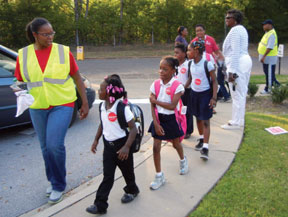 How to keep children safe as they head back to school
How to keep children safe as they head back to school
Put safety at the top of the list when getting kids ready for school
Summer vacation is drawing to a close and pretty soon the bells will be ringing to mark a new school year. The American Red Cross has steps that every-one can take to make the trip back to the classroom safer.
Keeping children safe is the top priority, especially for younger children and those heading to school for the first time. Parents should take the following steps:
- Make sure the child knows their phone number, address, how to get in touch with their parents at work, how to get in touch with another trusted adult and how to dial 9-1-1.
- Teach children not to talk to strangers or accept rides from someone they don’t know.
SCHOOL BUS SAFETY If children ride a bus to school, they should plan to get to their bus stop early and stand away from the curb while waiting for the bus to arrive. Other safety steps for students include:
- Board the bus only after it has come to a complete stop and the driver or attendant has instructed you to get on.
- Only board your bus and never an alternate one.
- Always stay in clear view of the bus driver and never walk behind the bus.
- Cross the street at the corner, obeying traffic signals and staying in the crosswalk.
- Never dart out into the street, or cross between parked cars.
WHAT DRIVERS SHOULD KNOW Drivers should be aware that children are out walking or biking to school and slow down, especially in residential areas and school zones. Motorists should know what the yellow and red bus signals mean. Yellow flashing lights indicate the bus is getting ready to stop and motorists should slow down and be prepared to stop. Red flashing lights and an extended stop sign indicate the bus is stopped and children are getting on or off. Drivers in both directions must stop their vehicles and wait until the lights go off, the stop sign is back in place and the bus is moving before they can start driving again.
GET TO SCHOOL SAFELY If children ride in a car to get to school, they should always wear a seat belt. Younger children should use car seats or booster seats until the lap-shoulder belt fits properly (typically for children ages eight-12 and over 4’9”), and ride in the back seat until they are at least 13 years old.
If a teenager is going to drive to school, parents should mandate that they use seat belts. Drivers should not use their cell phone to text or make calls, and should avoid eating or drinking while driving.
Some students ride their bike to school. They should always wear a helmet and ride on the right in the same direction as the traffic is going.
When children are walking to school, they should only cross the street at an intersection, and use a route along which the school has placed crossing guards. Parents should walk young children to school, along with children taking new routes or attending new schools, at least for the first week to ensure they know how to get there safely. Arrange for the kids to walk to school with a friend or classmate.
TAKE A FIRST AID CLASS Red Cross training can give you the confidence and skills to help with everyday emergencies from paper cuts to school sports injuries. A variety courses are available. Download the free Red Cross First Aid App so you’ll have access to expert advice whenever and wherever you need it.
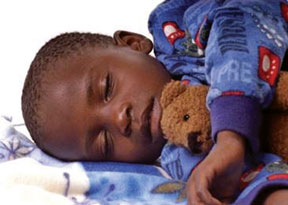 How to develop bedtime routines
How to develop bedtime routines
Pleasant bedtime routines ease the transition from being awake to being asleep by helping children feel more secure and comfortable about what they can expect at the end of every day. To create a bedtime routine that works for your toddler and that will serve him and you for years to come, put together a predictable sequence of events that you can consistently follow in the same order every night. The actual routine will evolve and change as your child grows, but the basics remain the same. At this age, the bedtime routine might involve the process of putting on PJs, brushing your child’s teeth, and reading him a good-night story. Or, your routine may involve a bath and a song, and a story, and another song, and a glass of water, and another story. It’s up to you to decide if you want to make it quick and easy or if you want to allow 20 to 30 minutes for special and exclusive time with your child for reading, snuggling, and being together.
Bedtime routines work best if you reserve the hour before bed-time for quiet play. This will lower your child’s activity level and pre-pare his nervous system for relaxation. Roughhousing, running, playing tickling games, and even watching action-packed TV shows or videos make peaceful transition to sleep especially difficult. The following illustrates beneficial routines. Yours can be anything that works for you and your child:
- Set a specific time and stick to it.Your child’s body clock will adjust much more quickly to the routine if the routine follows a natural and consistent pattern.
- Give a warning.Just before bedtime, give your child advance notice that the day is winding down. Your child may be too young to judge time yet, so saying something like “five more minutes” is not likely to be understood. Instead teach your child by association. Be-gin the first part of your routine — running the bath water, putting the toys away, or however your particular routine begins to signal the start of the wind down. Some parents signal impending bedtime with the ringing of a kitchen timer for five minutes; the child learns that the sound means bedtime. This allows an impersonal third party to announce bedtime and reduces the desire to complain, since even a toddler knows that you can’t argue with a machine.
Offer a snack. A light snack that includes both protein and carbohydrates — for example, a small piece of cheese and one half slice of whole-wheat bread — will induce sleep and help her stay asleep through the night. The carbohydrates make her sleepy, and the protein will help keep her blood sugar level on an even keel until breakfast. Be sure to brush her teeth after she eats.
- Give your child a warm bath. By raising your baby’s body temperature slightly, you’ll make him more prone to sleepiness. Also, playing with his bath toys allows him to relax.
- Get dressed for bed. Choose comfortable, non-binding pajamas that are neither too warm nor too light.
 High School Graduation Requirements
High School Graduation Requirements
There are two options for students to earn their high school diploma, ACCEL (18-credits) or Standard (24-credits). For both options, students must meet certain credit, grade point average (GPA) and assessment requirements to earn a high school diploma. A student’s graduation requirements are determined by the cohort, which is the year the student first entered 9th grade, and the chosen graduation option.
Students should know their requirements and regularly monitor their progress toward earning a diploma. School counselors are available to assist students with planning for college and career readiness. Students can view an up-to-date report on their progress toward meeting graduation requirements on Virtual Counselor.
Diploma Designations
Beginning in the 2013/14 school year, students can earn two Diploma Designations on their high school diploma, each with its own requirements beyond the standard diploma:
- The Scholar Diploma Designation aligns closely to the State University System’s requirements for admission into a Florida university. In addition to meeting the standard high school diploma requirements, students must earn additional credits in accelerated, rigorous courses and pass additional End-of-Course (EOC) exams. The Diploma Designation requirements are outlined for each Class in the Presentations and Charts below.
- The Merit Designation requires students to earn at least one industry certification in addition to their high school diploma.
The following charts and presentations outline the specific requirements for students in each graduation option based on the school year students entered the 9th grade.
Resources for Students and Parents
The charts and presentations below outline the graduation requirements for students in each graduation option and cohor
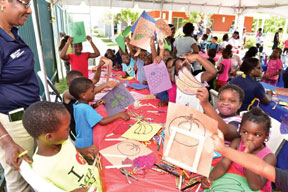 Traveling safely to and from school
Traveling safely to and from school
- Teach children to always remain in clear view of the bus driver.
- Teach children to sit and not move around on the school bus.
- Teach children to always check to see that no other traffic is coming before crossing the street.
- Wait for the bus to stop before approaching it from the curb.
- Children should always board and exit the bus at locations that provide safe access to the bus or to the school building.
- If your child’s school bus has lap/shoulder seat belts, make sure your child uses one at all times when in the bus. If your child’s school bus does not have lap/shoulder belts, encourage the school to buy or lease buses with lap/shoulder belts.
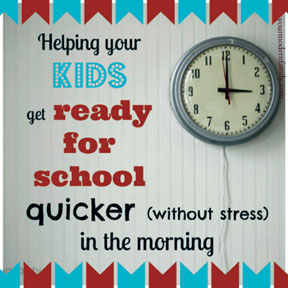 Five must-know tips for stress-free back-to-school mornings
Five must-know tips for stress-free back-to-school mornings
By Elaine Tan Comeau
Breathe. Inhale, exhale, and repeat. That is right, the crazy hectic mornings of “Back to School” are just around the corner. Local newspapers are full of Back To School shopping flyers and supermarkets have aisles stocked with bright dis-plays of pencils, binders, crayons and markers!
Whether your children are the ones who wake up early in the summer holidays raring to play outside or sleep in late like time does not matter, studies will show that the morning routine is the toughest one especially when school is back in session!
One in four school aged children are dealing with issues of anxiety as there is pressure and anticipation mounting up on all levels…. this so called “school stress” hits not only children but their parents as well. As much as we think having that first cup of coffee before the kids wake up will do the trick, we need to be more ready than that!
Surveys, articles and web-sites will show that the most stressful time of day for moms is the morning routine. One web-site I found stated that 8:25AM was the most stressful time of day for moms. (inspiringmoms.com)
Being a Mom of three, School teacher, Canadian Mompreneur of the Year, and founder of Easy Daysies Visual Routines for Kids, as well as parent/educational speaker, and podcaster on the Elaine’s Kitchen Table Podcast, I often get asked what my secrets are. So, here are my “FIVE MUST KNOW TIPS For Stress Free Back to School Mornings!” Don’t wait for back to school to start getting ready for stress-free mornings….
Start now and have S.U.P.E.R. mornings!
- S – Start Now!
Don’t wait for the first day of school to start. Back to school prep should start two weeks be-fore school starts! It takes about 21 days to develop a habit but for children 14 days is perfect to establish routine. Easy Day-sies is all about making good habits stick and helping busy families have easier days, that is how it got its name! Begin by starting bed time a bit earlier, slowly reaching the desired bed time by the week before school starts. This also means start waking the kids up early too.
A side note: How much sleep should our children be getting? According to the National Sleep Foundation who says that 60 percent of children under 18 complained about be-ing tired during the day and 15 percent admitted falling asleep in the classroom, here is what they have to say: Teens (ages 14-17) need 8-10 hours of sleep, school aged children (6-13) need 9-11 hours of sleep, and pre-school aged children (3-5) need 10-13 hours.
- U – Up You Get!
Wake up 30 minutes before the kids. When you get ready first it is much less stressful, you get some alone time without anyone pulling at you, you are less rushed and more cheerful to help the kids get ready. It is like showing up early for an important meeting, you just do not want to feel that same anxiety you would have if you were late for an important meet-ing. Whatever anxiety you have will be passed on to your children and you do not want to do that!
- P – Prep the night before:
Get lunches packed, home-work done and planners signed, clothes laid out and back packs packed. This will save you tons of time and arguments in the morning! This is a life habit and life skill you want to teach your children. They will transfer this skill of planning ahead and being prepared into their studies and into their first job interview!
- E – Easy Access Breakfast.
Have it all accessible so that the kids can get everything they need to have breakfast on their own. Have healthy choices in a low reach cupboard because breakfast is truly the most im-portant meal of the day. Studies will show that 20 percent of children skip breakfast and that skipping breakfast is linked to many problems such as lack of concentration, unhealthy weight gain, and the list goes on. Some quick breakfasts for the older kids who have to run out the door for band and sports practice are granola bars; break-fast bars high in fiber, fresh or dried fruit and dried cereal. Yogurt con-tains probiotic bacteria that helps regulate certain brain neurotransmitters that rule mood and may help lessen anxiety and depression. (Study done by PNAS, healthychildren.org)
- R – Routine routine routine!
Dr. Karen BeBord, a PhD, child development specialist (for North Carolina Cooperative Extension Service) states that routines are good and they help alleviate stress and that it is important to set up a daily rou-tine. She says that establish-ing a regular bedtime, wake up time, and bath time are important at any age as it helps children to learn to develop routines themselves. This is the premise behind Easy Daysies visual daily routines. Studies show that children as young as preschool age benefit from visual routines because they cooperate better and are less anxious when they know what is happening next.
I had so many parents ask me to create a visual routine for them at home to help their children be more cooperative and get out the door faster in the morning, similar to a visual schedule I had made for the front of my classroom. I made visual routines by parent demand for many years before it became the product called Easy Daysies (available at stores, including Staples Canada and Barnes & Noble USA). My heart now smiles every time I receive an email sharing how families are having easier days!
So, pat yourself on the back, because you read this blog, you are already ahead of the game and ready to tackle the dreaded back to school mornings. Start implementing your S.U.P.E.R mornings and you and your children will be so glad when September rolls around!
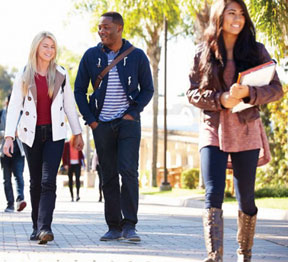 Are guns on campus the answer?
Are guns on campus the answer?
August 1st marked the beginning of a new era in Texas. A new law went into effect which allows faculty and staff to carry concealed weapons while being on campus.
Ironically, the bill went into effect on the 50-year anniversary of what was, at the time, one of the worst campus shootings in America at the University of Texas-Austin. According to PBS:
“Monday also marked the day a new Texas law went into effect, allowing people with concealed carry permits to bring their hand-guns onto the campuses of Texas public universities, including classrooms and student unions. Universities are also authorized to establish rules and regulations regarding the storing and carrying of handguns in certain areas on campus. For example, the law bans guns from sports arenas, research labs that house dangerous chemicals, and, depending on the school, dormitories. Open carrying is also still prohibited on campuses.”
The law has drawn praise from some and outrage from others. With recent shootings in public spaces, some people perceive that the new law will allow people to defend themselves in the un-fortunate event that there is a crisis or active shooter on campus. Others contend that with alcohol, drugs, and potentially upset students, this is a combustible situation that could lead to more macabre and violence.
Families come in all shapes, sizes, varieties and back-grounds. Some family units are blended and consist of a step-parent, a single parent or same sex parents. Family members may come from different cultures, origins, and religious back-grounds. Every family unit has a unique history, culture, story and make up.
Families are systems, much like a computer where each component plays an active and important role. When one component is not working, other parts tend to be affected. Sometimes, families are able to troubleshoot the problem and implement a quick and effective solution to fix it, allowing the system to reboot and continue working. After a while, though, another issue occurs and families often get stuck when they attempt to apply old solutions to new problems. When these solutions no longer work, families need extra support from an outside resource, like a family counselor, to help them get back up and running.
Families seek counseling for many reasons, some of which include:
- Breakdowns in communication
- Lack of connection, distance, and time spent together
- Divorce or separation
- Substance abuse, trauma, or grief and loss.
- Shifting and changing roles, responsibilities, and dynamics
- And many more…
Family therapy is not limited to parents with young children or teenagers. As children transition from adolescence to early adulthood, the family unit faces a new set of problems and obstacles. Families are continuously evolving and roles and dynamics between their members are ever changing. In working with a family counselor, families can learn to tackle problems through increasing communication, connection and creating in new ways to adjusting to the inevitable changes that all families experience as they grow and mature.
“Thank you for all the support you have given our family over the past few months. Not only did our son grow from your counseling, but I can tell you that our whole family benefited from the experience. You are great, professional, yet caring and personable as well. You have a gift. Thanks again!”
— L.S., Coconut Creek, FL – Mother
I specialize in family counseling with teenagers and young adults. I have extensive experience, training and knowledge working with families. I am passionate about the work I do and I am committed to helping you achieve the goals that are most important to you. Together we focus on:
- Shaping or re-shaping communication
- Increasing connection
- Having fun
- Creating the desired relationship, situation and experiences you want
- Allowing new and effective solutions to arise and be implemented.
Some of the benefits families report are: being able to talk openly and honestly, learning things about one another that they previously didn’t know or understand before, having more love and compassion for each other, bringing family fun back, feeling increased trust with each other, and having new tools to utilize in the future.
“Katie has showed me the tools on how to better handle and overcome situations. Katie has showed us our strengths with our kids and taught us on how and when to use them. I can honestly say that we are now going in the right direction to have a better and healthy relationship at home.”
— Lucy – Florida – Mother
If this describes you, let’s chat. Contact me directly at http://familyandcouplescounseling.com/contact-counseling/ or call me (954) 401-9011 to get your family back in good working order. You and your family deserve it!
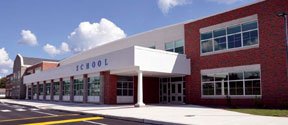 The school visit: What to look for, what to ask
The school visit: What to look for, what to ask
By GreatSchools Staff
There’s no substitute for visiting the schools on your list, so you can get a sense of the school environment and get your questions answered.
Be sure to visit all the schools on your list, if you can. A visit is the best way to deter-mine whether a school is right for your child. Even a short visit will help you identify a school’s strengths and challenges. It’s also the only way to get a feel for a school’s cli-mate — intangible but important factors like the dynamism of the teaching, engagement of the students, quality of communication and respect between students, teachers, administrators, and parents, and the overall sense that the school offers a safe and inspiring learning environment.
School visit checklists
Get a printable guide to help you plan your elementary, middle, or high school visit.
Before your visit
- Do your homework. Read about the schools you’ll be visiting. Examine their school profiles on GreatSchools.org. Talk to other parents and check your local newspaper for articles about the schools.
- Contact the school. Most schools conduct regular school tours and open houses during the enrollment season — typically in the fall. Call the school or go online to schedule a visit.
- Ask and observe. Jot down your questions before your visit (the sample questions below will help you create your list).
Key questions to ask
- Does this school have a particular educational philosophy or mission?
- Is the school implementing the Common Core State Standards, and if so, what is the procedure and timeline for teacher training and implementation?
- What is the average class size?
- What is this school’s approach to student discipline and safety?
- How much homework do students have? What is the school’s philosophy/approach to homework?
- What kind of library re-sources are available to students?
- How is technology used to support teaching and learning at this school?
- How do the arts fit into the curriculum? Is there a school choir, band or orchestra? A drama program? Art classes?
- What extracurricular opportunities (sports, clubs, community service, competitions) are available for students?
- How do students get to school? Is free school busing available?
- Is bullying a problem at the school? Does the school have an anti-bullying policy?
- Does the school have a program for gifted students?
- How does this school support students who have academic, social or emotional difficulties?
- What strategies are used to teach students who are not fluent in English?
- What professional development opportunities do teachers have? In what ways do teachers collaborate?
- Does the school offer Physical Education (PE) classes?
- What are some of the school’s greatest accomplishments? What are some of the biggest challenges this school faces?
Features to look for
- Do classrooms look cheerful? Is student work displayed, and does it seem appropriate for the grade level?
- Do teachers seem enthusiastic and knowledgeable, asking questions that stimulate students and keep them
engaged?
- Does the principal seem confident and interested in interacting with students, teachers and parents?
- How do students behave as they move from class to class or play outside?
- Is there an active Parent Teacher Association (PTA)? What other types of parent involvement take place at this school?
- How well are the facilities maintained? Are bathrooms clean and well supplied, and do the grounds look safe and inviting?
Especially for elementary schools
- What are some highlights of this school’s curriculum in reading, math, science and social studies?
- What criteria are used to determine student placement in classes?
- How does this school keep parents informed of school information and activities?
- Is quality child care available before and after school?
- How much outdoor time do kids get each day?
Especially for middle schools
- How does the school guide and prepare students for major academic decisions that will define their options in high school and beyond?
- Does the school offer tutoring or other support if students need extra help?
- Are world language classes (French, Spanish, etc.) offered to students?
- Breakfast for lunch? Make pancakes and freeze the left-overs. You can warm them up and pack them up for a fun lunch. Scrambled eggs or a sliced boiled egg can be a hit too (remember the ice pack though).
- Some kids don’t like peanut butter but will enjoy cashew or almond butter as a spread. (Meatless)
- Sliced mango, kiwi, or apples are a good snack (use orange juice to help prevent browning) (Meatless)
- Use leftovers for school lunch. If your child ate the beef stew last night for dinner, serve it up for lunch (place an ice pack in the lunch box though to pre-vent food illness).
- Use leftover chicken from dinner last night and make a sandwich vs. processed sandwich meat which is high in sodium (salt).
- Get out the cookie cutters – no not for cookies, but for sandwiches. Kids love food in shapes. Surprise them with different shapes over the week.
- Other bite-sized food includes cucumber and avocado rolls (many grocery stores now have a section of Japanese food). (Meatless)
- Toothpicks can add some fun too – kids love bite-sized food. So make a mini-sandwich and place a toothpick in it.
- Make your own Japanese rolls: Use Korean roasted sea-weed (this has a nice sesame flavor to it) and sticky rice. Just roll up the rice like into a mini-cylinder shape. Have your kids help you make it the night before.
- Edamame (soybean) or sugar snap peas (good source of protein) (Meatless)
- Try a garbanzo and kidney bean salad. (Meatless)
- Cube cheese and offer it on a toothpick. (Meatless)
- Make a face – Open faced bagel with cream cheese and a face (use raisin for the eyes, a cashew for the nose, etc.) Kids love to help create a face. (Meatless)
- Vanilla yogurt with raspberries and granola or nuts on top (place it in a small plastic container (use an ice pack to keep it cold) (Meatless)
- Pasta: Use mini-penne or bowtie pasta. Just throw on some pasta sauce. If you make it the night before, add a tsp of olive oil to prevent sticking. (Meatless)
- Use these thin, curly noodles and serve with peanut sauce or just plain. During winter months, use a thermos to serve up warm noodles (boil them in vegetable broth and use about 1/3 of the liquid for added flavor). (Meatless)
- Add dips- kids love dipping foods – Fruits and veggies are great for dipping! Serve mini-carrots or jicama with ranch dressing, or slightly steamed broccoli with light mayo. (Meatless)
- Burritos: Just use mini-tortillas and serve with beans and cheese. Many kids don’t need to have their foods warmed up to enjoy. Similarly, offer baked beans and a whole wheat tortilla separate; many kids like to enjoy food separately and may not enjoy pinto or black beans. (Meatless)
- Serve sliced ham, chicken, tuna or egg salad sandwiches on 100% whole wheat or other bran. Go with what your child likes.
Mentoring Tomorrow’s Leaders (MTL) is a dropout prevention, educational re-engagement, and student leadership program that is based on five pillars. The five pillars of this High School Graduation Initiative are:
- Academic Achievement –Ninth and 10th graders who earned below a 2.0 grade point average attend study hall sessions where they are assigned a caring adult-an Academic Coach-and student mentors for ongoing support. Together they create a quiet, supportive, welcoming, and structured study hall environment where students can complete their homework, study, check their grades, and work together to resolve conflicts that are hindering their academic progress. Mentors and mentees are also exposed to Success Highways, a curriculum that builds resilience and leads to high school graduation, as well as College Summit’s freshmen curriculum – Clean Slate, a curriculum that inspires all students to consider going to college after high school and assists with the college application process.
- Mentoring –High achieving (GPA 3.0 or above) upperclassmen with demonstrated leadership skills participate in a two-year mentor relationship with students who have earned a GPA lower than 2.0. This is a structured relationship that is facilitated by MTL program staff. All MTL students are ex-posed to adult role models and mentors from the community during monthly workshops, and from interacting with guest speakers who take part in the MTL Career and College Exploration Series. Monthly parent education workshops to cover topics such as Graduation Requirements, Grading, Stages of Adolescent Development, Academic Needs of Adolescents, etc. Parent workshops to address parental needs such as Employability Training, Managing Stress, and literacy classes will also be offered while simultaneously developing parent leaders.
- Family Involvement –MTL Parents and Guardians attend monthly parent education workshops to cover topics such as graduation requirements, grading, stages of adolescent development, academic needs of adolescents, etc. Parent workshops to address parental needs such as employability training, managing stress, literacy classes will also be offered while simultaneously developing parent leaders.
- Community Support – Community members volunteer to serve as adult mentors and role models, presenters at parent and student workshops, guest speakers through the College and Career Exploration Series, as well as donors, sponsors and members of the MTL Advisory Board.
- Incentives –Program participants earn several incentives as they work to improve their grades and meet high school graduation requirements. Student mentors also earn incentives as they inspire their peers to achieve academic excellence. These incentives include recognition within the school and community, visits to local colleges and post-secondary institutions, and an all-expense paid Tri-State College Tour.

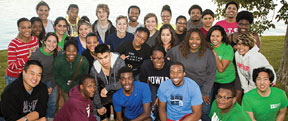
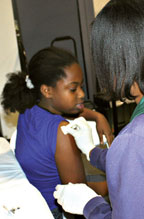
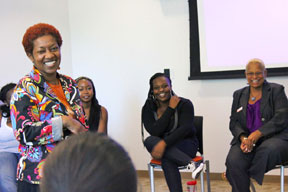
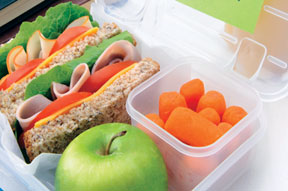
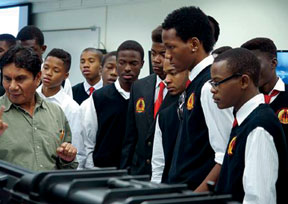

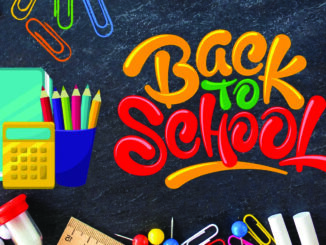

Be the first to comment